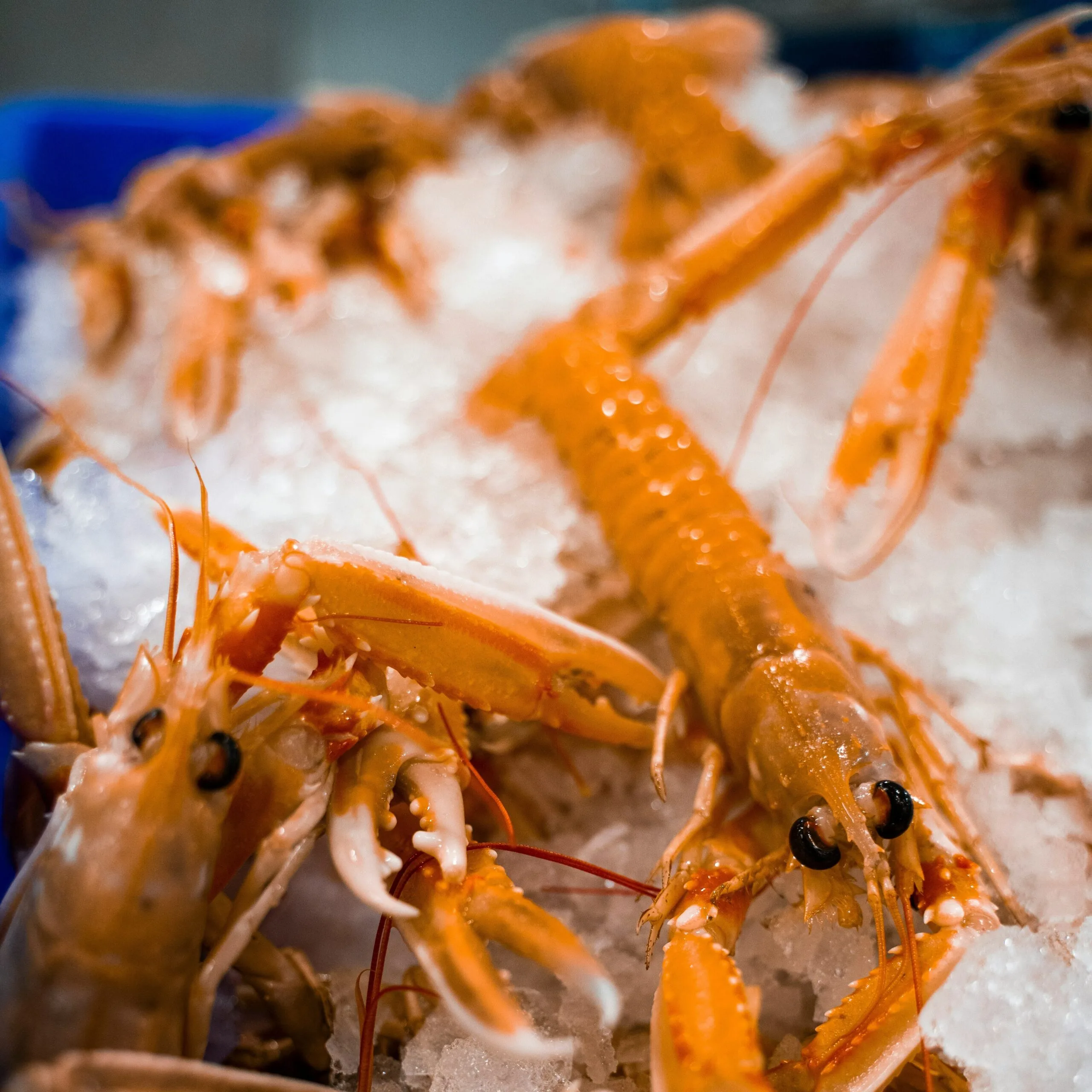
ingredients:
- Scottish langoustine shells 2,5kg
- celery diced 150g
- shallots sliced 150g
- fennel sliced 100g
- garlic bulbs 1
- saffron pinch
- bay leaves 2
- thyme 50g
- star anise 2
- peppercorn 5g
- fennel seeds 5g
- red apples 2
- tomato puree 100g
- brandy 150ml
- white wine 150ml
- pernod 100ml
instructions:
Roast the Shells
Preheat the oven to 200°C (390°F). Spread the shells evenly on a baking tray and roast them for 10-15 minutes, or until they develop a deep, toasted aroma. This step enhances their flavour, giving the sauce a rich, roasted depth.
Sweat the Vegetables
In a large stock pot over medium heat, add a small amount of oil or butter. Add the chopped vegetables (such as onions, carrots, celery, and fennel) and cook gently, stirring occasionally, until they become soft and translucent. Be careful not to brown them—this step is about coaxing out their natural sweetness.
Deglaze with Brandy
Increase the heat slightly, then pour in the brandy. Carefully ignite the alcohol with a flame to burn off the harshness, letting it flambé for a few seconds until the flames subside. This will leave behind a rich, aromatic depth.
Reduce the Liquids
Add the white wine and let it reduce until nearly dry, intensifying the flavour. Follow with Pernod, reducing again to concentrate its subtle anise notes.
Simmer with the Remaining Ingredients
Add the roasted shells to the pot, along with any additional aromatics, herbs, and spices. Pour in just enough liquid (such as water or fish stock) to barely cover the shells. Simmer gently for 10-15 minutes, allowing all the flavours to meld together without over-extracting bitterness from the shells.
Shock with Ice & Simmer
Add a generous amount of ice to the pot—this helps extract maximum flavour by causing a slow and even temperature change. Bring the mixture to a gentle simmer (avoid boiling, as that can make the sauce cloudy or bitter).
Season & Finish the Sauce
Taste the broth and adjust the seasoning with salt and, if needed, a touch of acidity like lemon juice. Strain the sauce through a fine sieve or cheesecloth to remove solids.
Final Reduction & Enrichment
Before serving, reduce the sauce again over low heat to intensify its richness. Just before plating, whisk in cold butter to create a velvety texture and glossy finish. For an extra layer of warmth, consider infusing thin slices of fresh ginger during the final reduction.
Serving Suggestion
This deeply flavorful sauce pairs beautifully with any delicate white fish, shellfish, or seafood dish. Drizzle it over pan-seared fillets, poached fish, or even seafood risotto for an elegant finish.